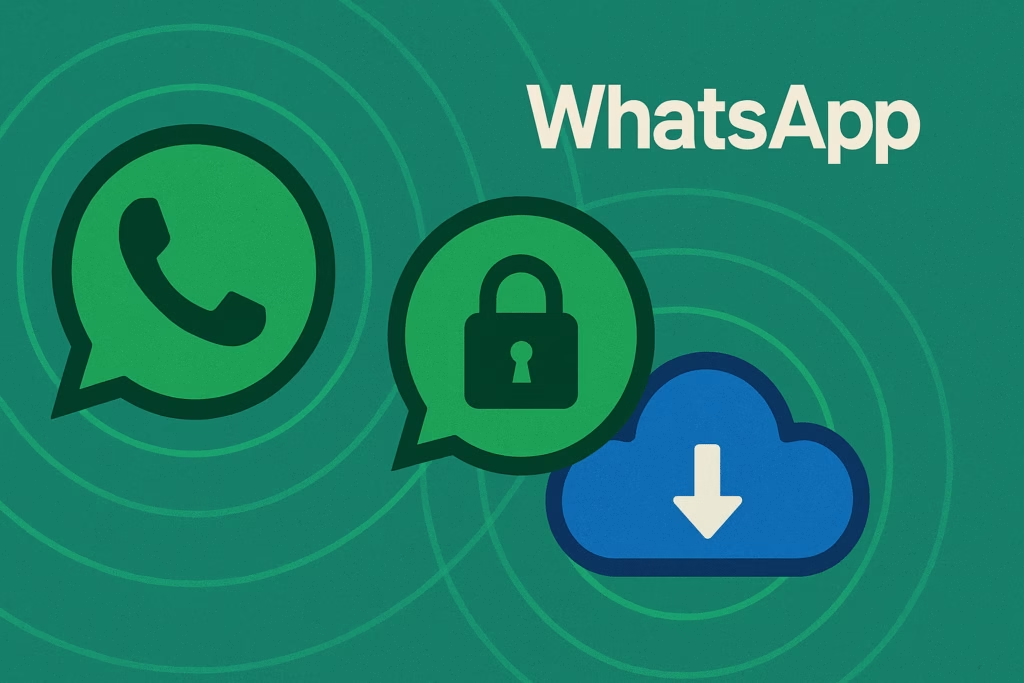
Bank phishing attacks represent one of the most dangerous threats to American consumers’ financial security, with cybercriminals stealing billions of dollars annually through sophisticated schemes targeting banking customers. These attacks have evolved far beyond simple email scams, now encompassing text messages, phone calls, and fake websites that perfectly mimic legitimate banking interfaces.
According to the Federal Bureau of Investigation, financial fraud losses exceeded $10.3 billion in 2022, with phishing attacks accounting for a significant portion of these crimes. The sophistication of modern bank phishing scams makes them increasingly difficult to detect, putting both individual consumers and businesses at unprecedented risk.
Understanding how these attacks work and implementing proper defenses is crucial for protecting your financial assets in today’s digital banking environment. This comprehensive guide will equip you with the knowledge and tools necessary to identify, prevent, and respond to bank phishing threats effectively.
Understanding Bank Phishing Attack Methods
Bank phishing scams have diversified into multiple attack vectors, each designed to exploit different aspects of human psychology and digital communication channels. Cybercriminals continuously refine their techniques to bypass security measures and trick even cautious individuals.
Email-Based Banking Phishing
Traditional email phishing remains the most common method for targeting banking customers. These attacks typically involve messages that appear to originate from legitimate financial institutions, complete with official logos, formatting, and language. The emails often contain urgent calls to action, such as:
- Immediate account verification requirements
- Suspicious activity alerts requiring immediate response
- System updates necessitating credential confirmation
- Limited-time security upgrade notifications
Modern banking phishing emails have become increasingly sophisticated, incorporating personalized information obtained from data breaches or social media profiles to appear more credible.
SMS and Text Message Phishing (Smishing)
Mobile banking users face growing threats from SMS phishing attacks, commonly known as smishing. These attacks exploit the immediacy and personal nature of text messaging, with cybercriminals sending messages that appear to come from banks’ official short codes or phone numbers.
Typical smishing messages include shortened URLs that redirect users to fraudulent banking websites designed to capture login credentials, personal information, and financial data. The Federal Trade Commission reports a 700% increase in smishing attacks targeting financial institutions since 2020.
Voice Phishing (Vishing) Targeting Bank Customers
Sophisticated criminals employ voice phishing techniques, using social engineering tactics during phone conversations to extract sensitive banking information. These attacks often begin with automated calls claiming to represent fraud departments, followed by live operators who sound professional and knowledgeable about banking procedures.
Vishing attacks targeting banks frequently involve:
- Callers claiming to verify recent transactions
- Requests for account numbers or security codes
- Urgent warnings about account compromises
- Offers to help secure accounts through phone-based verification
Common Bank Phishing Scam Tactics and Red Flags
Recognizing the warning signs of bank phishing attempts is essential for financial protection. Cybercriminals rely on creating sense of urgency, fear, and authority to bypass rational decision-making processes.
Urgency and Fear-Based Messaging
Phishing banks scams consistently employ psychological pressure tactics designed to prompt immediate action without careful consideration. Messages typically emphasize time-sensitive situations requiring instant response to prevent account closure, fund loss, or security breaches.
Legitimate banks rarely require immediate action through email or text messages for routine security matters. Authentic financial institutions provide multiple contact methods and reasonable timeframes for addressing account issues.
Generic Greetings and Impersonal Communication
While sophisticated phishing attacks may include personal information, many bank phishing emails contain generic greetings such as “Dear Customer” or “Valued Client.” Legitimate banking communications typically address customers by name and reference specific account details without requesting sensitive information via electronic communication.
Suspicious Links and Attachments
Bank phishing scams frequently contain malicious links designed to redirect users to fraudulent websites or install malware on their devices. These links often use URL shortening services or contain subtle misspellings of legitimate banking domain names.
Key indicators of suspicious links include:
- Domains that don’t match official bank websites
- Unusual characters or numbers in URLs
- Redirects through multiple domains
- Requests to download software or plugins
Step-by-Step Protection Strategies Against Banking Phishing
Implementing comprehensive protection measures requires a multi-layered approach combining technical safeguards, behavioral awareness, and proactive monitoring practices.
Email Security Best Practices
Effective email protection forms the foundation of phishing defense for banking customers. Follow these essential steps to secure your email communications:
- Enable spam filtering: Configure robust spam filters on all email accounts and regularly update filter settings
- Verify sender authenticity: Check sender email addresses carefully for subtle variations from legitimate banking domains
- Avoid clicking embedded links: Navigate to banking websites directly through bookmarks or official mobile applications
- Use email encryption: Enable encryption for sensitive financial communications when available
Mobile Banking Security Measures
Mobile banking security requires specialized attention due to the unique vulnerabilities of smartphone and tablet devices. Implement these critical protections:
- Download banking apps exclusively from official app stores
- Enable two-factor authentication for all banking applications
- Avoid banking on public Wi-Fi networks
- Regularly update mobile operating systems and banking apps
- Use strong, unique passwords for banking applications
Browser and Web Security Configuration
Proper browser configuration significantly reduces exposure to web-based banking phishing attacks. Essential browser security measures include:
Modern browsers offer built-in phishing protection features that automatically detect and block access to known fraudulent websites. Ensure these features remain enabled and regularly update browser software to maintain current security protections.
Advanced Phishing Detection Techniques
Beyond basic awareness, advanced detection techniques help identify sophisticated phishing attempts that bypass standard security measures.
Website Authentication Verification
Legitimate banking websites implement multiple security indicators that help users verify authenticity. Before entering credentials on any banking website, check for:
- SSL certificates: Look for “https://” and padlock icons in the address bar
- Extended validation certificates: Legitimate banks often display green address bars or company names
- Official domain names: Verify exact spelling of banking website domains
- Security badges: Look for official security certifications and trust seals
Communication Pattern Analysis
Analyzing communication patterns helps identify phishing attempts that mimic legitimate banking correspondence. Pay attention to writing quality, grammar, formatting consistency, and request types that differ from typical banking communications.
Professional phishing protection services like PhishDef employ advanced pattern recognition algorithms to identify subtle indicators of fraudulent communications that human analysis might miss, providing an additional layer of security for banking customers.
Incident Response and Recovery Procedures
Despite preventive measures, some individuals may encounter successful phishing attempts. Rapid response procedures minimize damage and prevent further compromise.
Immediate Response Actions
If you suspect you’ve fallen victim to a bank phishing attack, take these immediate steps:
- Contact your bank immediately using official phone numbers
- Change all banking passwords and security questions
- Monitor account statements for unauthorized transactions
- Place fraud alerts on credit reports
- Document all suspicious communications for law enforcement
Long-term Recovery and Monitoring
Recovery from banking phishing attacks requires ongoing vigilance and systematic monitoring of financial accounts and credit reports. Consider enrolling in identity theft protection services and implementing enhanced security measures for all financial accounts.
The Federal Trade Commission’s Identity Theft website provides comprehensive resources for recovery assistance and step-by-step guidance for victims of financial fraud.
Industry Trends and Emerging Threats
The landscape of bank phishing continues evolving as cybercriminals adopt new technologies and attack methods. Artificial intelligence and machine learning enable more convincing fraudulent communications, while cryptocurrency-related banking services create new attack vectors.
Recent trends include deepfake voice technology used in vishing attacks and sophisticated social media reconnaissance to personalize phishing attempts. Staying informed about emerging threats helps maintain effective defense strategies against evolving attack methods.
Key Takeaways for Banking Security
Protecting yourself against bank phishing requires constant vigilance, technical safeguards, and awareness of evolving threat landscapes. Remember these critical points:
- Legitimate banks never request sensitive information through email, text, or unsolicited phone calls
- Always verify communications through independent contact with your financial institution
- Implement multi-layered security measures including strong passwords, two-factor authentication, and secure browsing practices
- Stay informed about current phishing trends and attack methods
- Respond immediately if you suspect a successful phishing attack
Your financial security depends on maintaining robust defenses against increasingly sophisticated phishing attacks. Consider implementing comprehensive phishing protection solutions like PhishDef to supplement your personal security practices with advanced threat detection and prevention capabilities. Take action today to secure your banking information and protect your financial future from cybercriminal threats.


